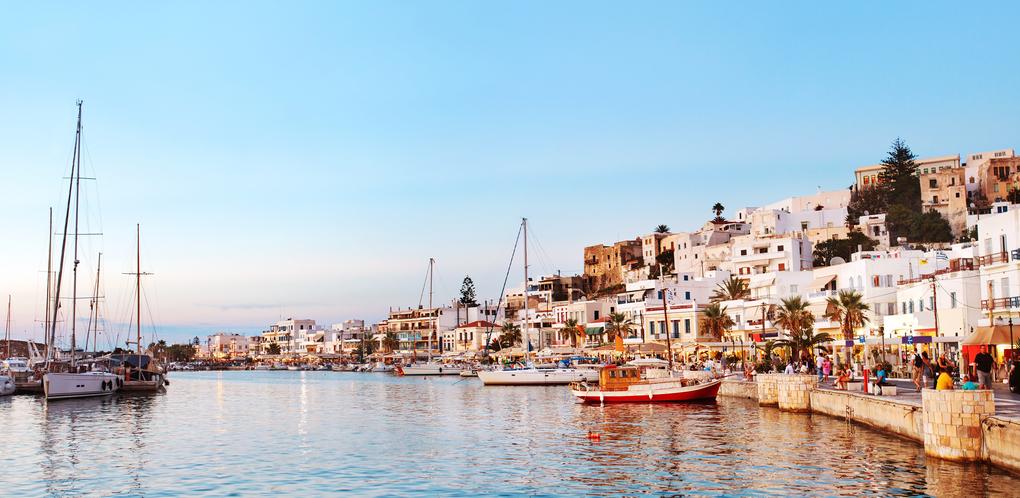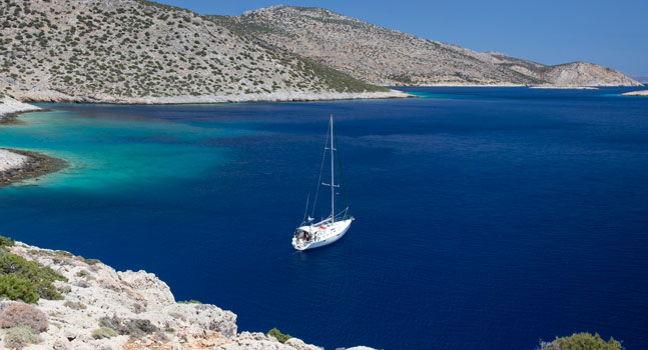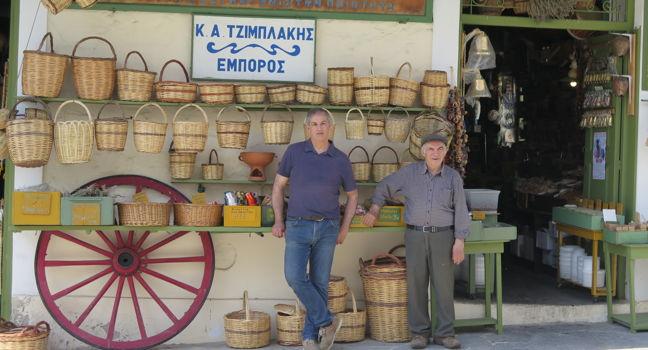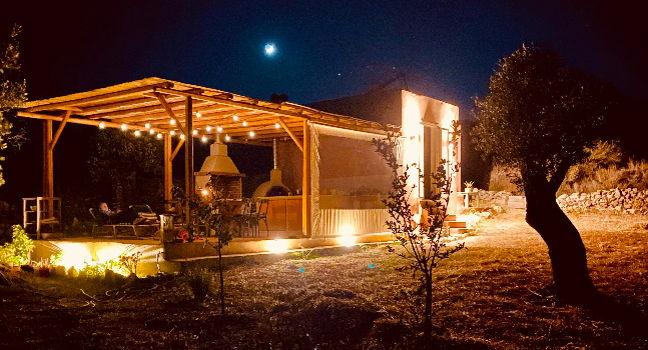1. Portara: Enter the Doorway to Heaven
Portara, as the Great Door is known in Greek, is an enormous marble doorway near the port of Naxos on the isle of Palatia. The entrance was originally part of a larger project that was never completed. In 530 BC, the ruler of Naxos, Lygdamis, commissioned a temple to be built, though after he was overthrown in 506 BC construction stopped. All that remains is Portara, which some say honors Apollo, the god of music and poets. Others, however, claim that it was built to pay tribute to Dionysus, the god of wine, as well as the patron god of Naxos. Now, a symbol of the great city, the doorway, which nowadays consists of three remaining columns, is a sight to behold when the sun descends on the horizon.
2. Archaeological Museum: Journey to Ancient Greece
The Naxos Archaeological Museum, in the central square atop the Kastro, is housed in a breathtaking 17th century Venetian building. Consisting of five floors, which once served as a school for Jesuits, the museum was established in 1973. Showcasing all of the archaeological finds in Naxos, the gallery displays artifacts dating back to the late Neolithic period, including a collection of white marble Cycladic statues, gold jewelry, ceramics, tools and funeral offerings. The museum also hosts a collection of Mycenaean pottery, as well as statues from the Bronze Age, the Archaic period, the Classical era, the Roman Era and the Hellenistic period. A must-see for those who want to witness Greek artistry in all its glory.
3. Castle Of Naxos: Experience the Byzantine Era
The Castle of Naxos, built in 1207 by Markos II Sanoudos, a Venetian conqueror, is a pentagonal fortress with three separate gates. Situated a hill, 30 meters above sea level, the castle was constructed with local resources over the ruins of the ancient acropolis. The rounded Glezos tower near the northwestern gate has four floors that have been exquisitely preserved. The entrance to the tower displays the coat-of arms of the Crispi family, who once inhabited the fortress. Though restoration is ongoing, visitors are invited to visit the museum, which is expected become the leading Byzantine museum in Cyclades when the work is completed.
4. Agios Prokopios: Bum Around the Beach
The Agios Prokopios beach is regarded as one of the most beautiful shorelines in all of Europe. Extending for approximately a mile, the sandy beach is encircled by dunes, which protect the crystalline coastline from the strong winds on the island. Visitors can enjoy the beach's lounge chairs, umbrellas and water sports facilities, or simply relax on the expanse of unspoiled sand surrounding the service area. Behind the dunes, tourists will find a variety of hotels, restaurants, cafes and bars. Three miles from town, Agios Prokopios can be accessed by bus service, which runs throughout the day from the town of Naxos.
5. Temple of Demeter: Honor the Goddess of Grain
The Temple of Demeter, near the village of Sangri, is constructed in local marble and dates back to the 6th century BC. The temple honors Demeter, the ancient goddess of grain, because the surrounding area is extremely fertile. Built in 530 BC in a classical architectural style, the building was turned into a Christian church following the advent of Christianity. Though ruined during the Arab invasion in the 6th century AD, the temple was rebuilt in 1977 following the excavation of the area, which uncovered the original shrine. Visitors can access the temple, which lies six miles from town, by car.







